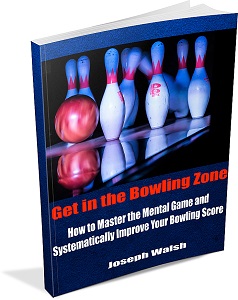When you’re analyzing or troubleshooting your bowling shot, there are a few different numbers you’ll hear getting thrown around.
There’s the shot’s revolutions, which means how much the ball revolves on its journey towards the pins.
But there’s also the rotations that your ball makes as it heads down the lane.
These may sound like the same thing at first, but there is an important distinction that you’ll want to understand if you’re going to figure out what’s really happening with your shot.
Bowling Ball Rev Rate Defined
First, revolutions are commonly referred to as one’s “rev rate,” and it’s a number that can be a little confusing to really grasp.
This is partly because it’s usually measured per minute, giving you a number in the hundreds, but in reality, of course, the ball is only on the lane surface for a couple seconds.
So the actual revolutions it makes, then, is much less. But still, we refer to a rev rate of 400 or 500, even though that has nothing to do with what you will actually see on the lane.
Revs vs. Rotation
Rotation, on the other hand, refers to the direction that the ball’s revs are taking it.
This can range from a completely straight end-over-end roll that is rotating in the direction it is traveling, which is down the lane.
This would be straight bowlers or the roll you would use in standard spare shooting.
But bowlers who employ any degree of “hook” are utilizing different types of rotation, which are expressed in degrees (compared to the straight shot of 0 degrees).
Many bowlers have around a 45 degree range of axis rotation which is a medium roll and medium back end hook.
More extreme is a 90 degree axis rotation, which will make the ball skid longer down the lane and have a much stronger back end hook. Be sure not to forget lane conditions.
The 90 degree axis rotation is great for a ball on heavy oil and longer patters, but in drier and/or short conditions it would not lead to a good shot.
Always take into account the pattern you are facing when deciding what type of shot to throw.
Rotation isn’t all that makes the ball move the way it does. The degree of hook involves your rev rate, which we discussed first, as well as additional factors like your ball speed and tilt.
There are even general guidelines for “matching” your rev rate and speed. For example, a shot of 15-16 mph would typically “match” to a rev rate of 200-250 rpms.
And on the other end of the spectrum, a ball thrown at 19 or more mph is matched with 400 or more rpms.
Some bowlers have styles that are more speed or rev dominant (meaning that one is higher or lower than the corresponding “match,” so don’t read too much into this.
Have a coach or trusted bowling partner work this out with you if you are serious about analyzing your bowling shot.


Leave a Reply